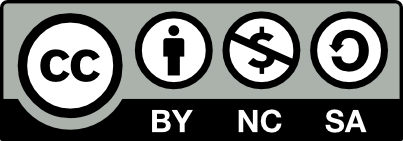/ A continuous bustle of boats, Cartagena de Indias at the beginning of the 17th century
Abstract
This article is a work that presents, through the study of the royal coffers of the port city of Cartagena de Indias in the first half of the seventeenth century, and specifically the payment of the Almojarifazgo tax in addition to other scattered sources found in the General Archive of the Indies, a study of the commercial circuits of the Caribbean at regional level from this port. Although with the limitations implicit in the sources of the 17th century, we were able to obtain a detailed movement of ships and merchandise, in short, an approximation to the internal commerce of the Caribbean.
References
Assadourian, Carlos, S., El sistema de la economía colonial. Mercado interno, regiones y espacios económicos, Lima: Instituto de Estudios Peruanos, 1982.
Belmonte Postigo, José Luis, “Notas sobre el tráfico de esclavos en Santiago de Cuba.” En: Memorias Revista de Historia y Arqueología desde el Caribe. Barranquilla, Número 8, 2008.
Cardozo Galué, Germán, Maracaibo y su región histórica. El circuito agroexportador 1830-1860, Universidad del Zulia Maracaibo, 1991.
Carmagnani, Hernández y Romano, Para una historia de América: las estructuras, Volumen I, II y III, México: Fondo de Cultura Económica, 1999.
Castillo Mathieu, Nicolás, La llave de Indias, Bogotá: Ediciones el Tiempo, 1981.
Chaunu, Pierre y Hugette, Sevilla et L´Atlantique 15041650, Paris: Editorial A. Colin, 1960.
Crespo Solano, Ana, Mercaderes Atlánticos, Redes del comercio flamenco y holandés entre Europa y el Caribe. Córdoba: Universidad de Córdoba, 2009.
Elías Caro, Jorge E. (Editor), Santa Marta del olvido al recuerdo. Historia económica y social de más de cuatro siglos. Santa Marta: Universidad del Magdalena, 2010.
Farías, Arcila Comercio entre Venezuela y México en los siglos XVI y XVII, México: Fondo Cultura Económica, 1950.
Fisher, Jhon, Comercial Relation between Spain and Spanish in the era of free trade, Liverpool: Universidad de Liverpool, 1985.
Gall, J. y F., El filibusterismo, México: Fondo de Cultura económica, 2014. La primera edición fue de 1955.
Garavaglia, J. C., Mercado interno y economía colonial, México: Grijalbo, 1983.
Garavaglia, Juan Carlos y Marchena Juan, América Latina de los orígenes a la independencia, Barcelona: Crítica, 2005.
García Baquero, Antonio, La Carrera de Indias. Suma de contratación y océano de negocios, Sevilla: Algaida, 1992.
García de León, Antonio, El mar de los deseos. El caribe hispano musical. Historia y contrapunto. México: Siglo XXI, 2002.
García Fuentes, Lutgardo, El comercio español con América, 1650-1700. Sevilla: EEHH, 1980.
Gelman, Jorge, De mercachifle a comerciante: los caminos del ascenso colonial en el río de la Plata. La Rábida (Huelva): Universidad Internacional de Andalucía, 1996.
Gl Bermejo, Juana, La Española: anotaciones históricas 1600-1650, Sevilla: EEHH, 1983.
Hamilton Earl J., El tesoro americano y la revolución de los precios en España 1511-1650, Madrid: Ariel, 1975.
Hernández Tapia, C. “Despoblación de la isla de Santo Domingo en el siglo XVII”. En: Anuario de Estudios Hispanoamericanos, 1970.
Herrero Sánchez, Manuel, “La explotación de las salinas de la Punta de Araya. Un factor conflictivo en el proceso de acercamiento Hispano-neerlandés 16481677.” En: Cuadernos de Historia Moderna. Número
, Madrid, 1993
Martínez Reyes, G. Cartas de los Obispos de Cartagena durante el periodo hispánico 1534-1820, Medellín: Academia colombiana de historia eclesiástica, 1986.
Morineau, Michael, Incroyables gazettes et fauleux metaux. Les retours de trersor americanes d´apres les gazettes holandaises (siecles XVI-XVIII), Nueva York: Cambridge University Press y Maison Sciencia de L´home, Canbridge, 1985.
Portuondo Zúñiga, O., Introducción a la obra de don Josep de Ribera, La Habana: Editorial Ciencias Sociales,
Romano, Ruggiero, Coyunturas opuestas. La crisis del siglo XVII en Europa e Hispanoamérica, México: Fondo de Cultura económica, 1993.
Trouillot, Michael-Ralf, Silencing the past: power o the production of History, Boston: Beacon Press, 1995.
Valtierra Ángel (S.J.) El esclavo de los esclavos Pedro Claver S.J. Tercer centenario de su muerte 1654-1954, Bogotá: Imprenta Nacional, 1954.
Vidal Ortega, Antonino, “Cartagena de Indias y los mercaderes portugueses de esclavos en la primera mitad del siglo XVII.” En: Anais de Historia- CHAM, Lisboa. Vol. 16, 2015. Pp. 17-50.
Vidal Ortega, Antonino, “La ciudad descarnada. Conflictos de poder en la Cartagena de Indias de comienzos del siglo XVII.” En: Historia Caribe. Volumen II, Barranquilla, 2002.
Vidal Ortega, Antonino, Cartagena de Indias en la articulación del espacio regional Caribe. La producción agraria, 1580-1640, Cádiz: Agrija, 1998.
Vila Vilar, Enriqueta. “Extranjeros en Cartagena de Indias 1593-1630”, En: Jahrbuch fur Geschichte 16: 147184, 16 Viena, 1979.
License
Copyright (c) 2022 Journal ECOS UASD

This work is licensed under the Creative Commons Attribution-Noncommercial-NoDerivs 4.0 International license. https://creativecommons.org









